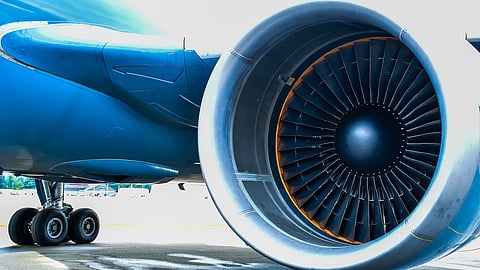Insight: 4 Air Cargo Trends for the Coming Decade
The global air cargo market is expected to see a major boom over the next ten years, this promises major changes in the way we work, the technologies in the sector and the opportunities for us to grasp.
In this piece, TLME explores 4 key future trends to look out for and align with to ensure your business and operations are leading the pack well into the future.
Before we begin the 4 key trends, let's have a recap on the present sector to provide a framework for the later trends.
Firstly, the sector has just about found its feet after the downturn post the global pandemic, which led to a huge drop in demand, high fuel costs, grounded flights, and trimmed routes.
However, other issues have caused ripples throughout the sector stemming from spiraling energy prices in key markets (and the associated threat of a global recession) and the ongoing war in Ukraine.
The above has collectively meant a sluggish 2023 thus far, however, the future holds much more hope due to the below factors:
1. Holistic Supply Chains
While the pandemic brought much pain and instability, every cloud has a silver lining, and the silver lining of the pandemic was the increased levels of collaboration witnessed across different sectors.
A united, smooth functioning supply chain is something of a Holy Grail in logistics, yet it is not easy - or often logical - to realize due to intense competition, differing levels of technological development, as well as unique working practices.
That said, there's nothing like a crisis in bringing people together.
One of the keys to future collaboration is in preperation for the next potential shockwave that could destabilize the global economy, as companies see the value in being ready for crisis (or should we say crises), they are more eager to prepare collectively.
Secondly, as technology improves, new opportunities will develop within and around the supply chain to build new unions to serve an increasingly demanding customer base.
2. Overcapacity
Another effect of the pandemic was the vast congestion it caused at seaports throughout the world.
This meant that huge delays were felt by shippers, who then moved their products over to air cargo in order to meet deadlines.
In the short-term, this hiked demand and carriers had to increase the belly size of their planes, yet that move is now coming back to haunt airlines and causing a swell of overcapacity.
This means that air cargo freight rates will fall until we hit prepandemic levels (likely by the end of 2023), yet air cargo leaders have generally sounded a positive note with regard to the next decade.
In late 2022, Tobias König, Global Chief Executive of Rhenus Air & Ocean, said "...the global economy will continue to grow and in the long term I think there will be more cargo for air freight.”
While Tim Strauss of Amerijet International said: "If there is demand for faster movement of product currently shipped by oceanfreight there’s not another solution outside of air cargo," implying that demand will continually return.
He added: “I think there’s some demographic things that operate in our favour in the industry so I think it’s going to be pretty smooth sailing until about 2030.”
3. Sustainability
The drive for sustainable change puts the air cargo sector in a tricky position - sustainability is the mission of the era - worldwide - yet the airline industry is a major polluter.
It's easy to point fingers at the leaders of the air cargo arena here, yet the reality is that while demand persists, someone has to meet that demand, meaning there's a tightrope to be walked between green change and meeting targets.
Whatever happens in the future, this is certain - airlines must be at the forefront of sustainable developments or risk being cut adrift in the market, penalised politically and shunned by the general public.
Some potential changes airlines can already move towards include improving aircarft efficiency, utilising sustainable aviation fuels (SAFs), going paperless (via e-freight), and offsetting carbon emissions with a host of green initiatives, such as investing in research, replanting trees in negatively affected areas, providing aid to impacted communities, investing in new climate-conscious staff, and so forth.
4. Digitalization
Another way to 'greenify' oeprations is via digitalization.
Digitalization allows for predictive analytics and smart operations to minimise harmful pollutants and maximize downtimes.
Further, carriers and airports will continue to invest in the automation of processes with the use of AI globally, and we are seeing this in particular in the Middle East.
Such developments have the promise of slashing costs, enhanced collaboration and massive gains in efficiency, as real-time data changes the way we work.
The companies that can make real-time data easily visible and transparent, as well as accessible (ideally via smartphone) will be the winners in the long-term.
The one key consideration here, however, is cybersecurity, with cybercrime becoming increasingly lucrative and widespread, companies must be prepared for attacks with up-to-date systems and skillful staff.


